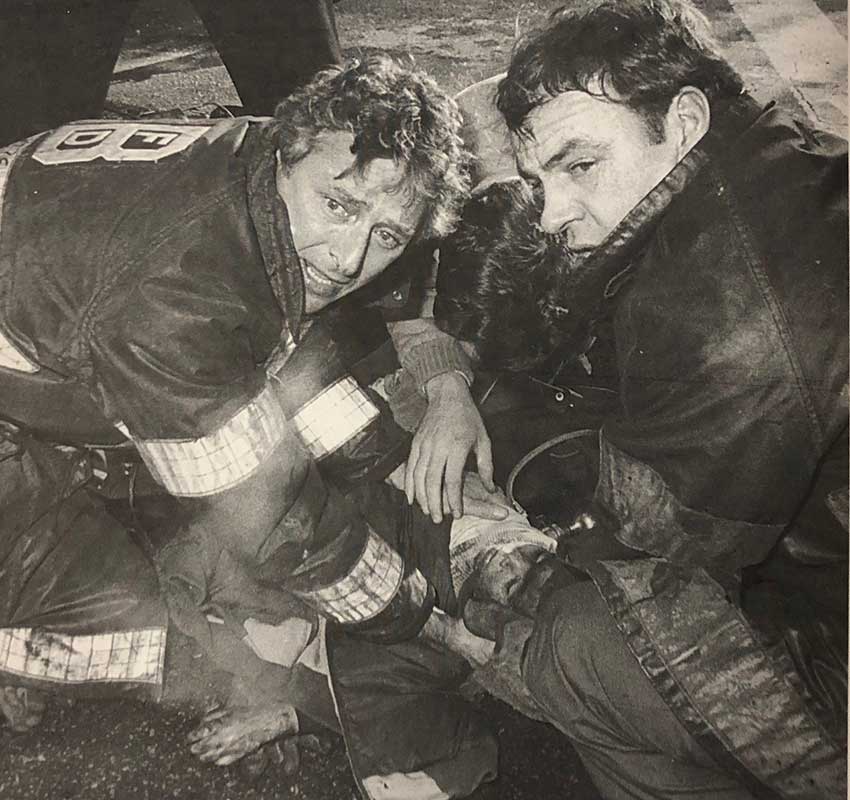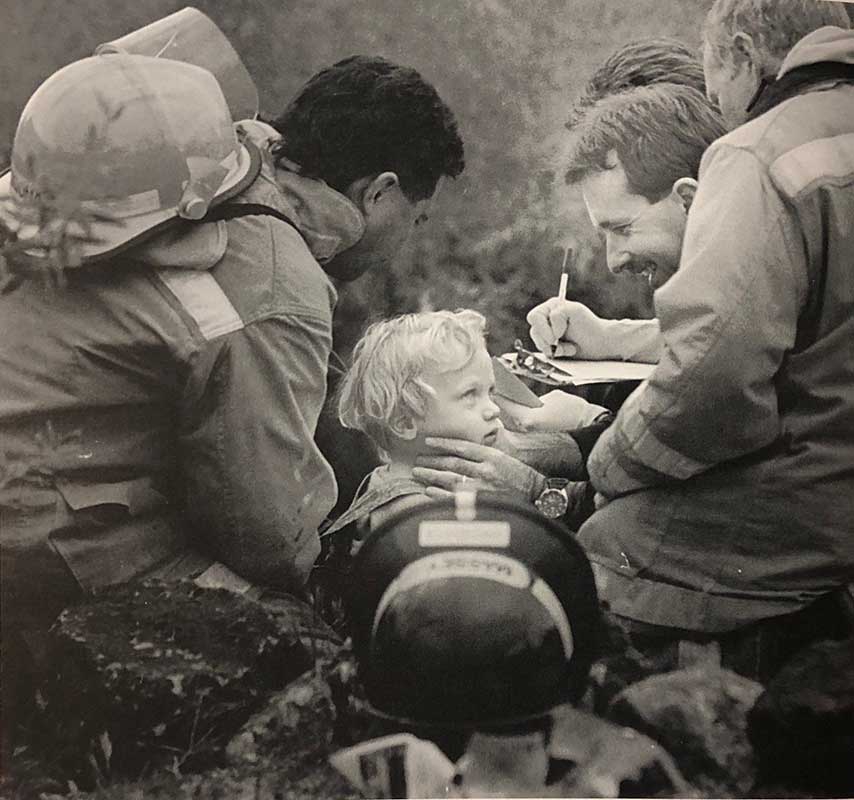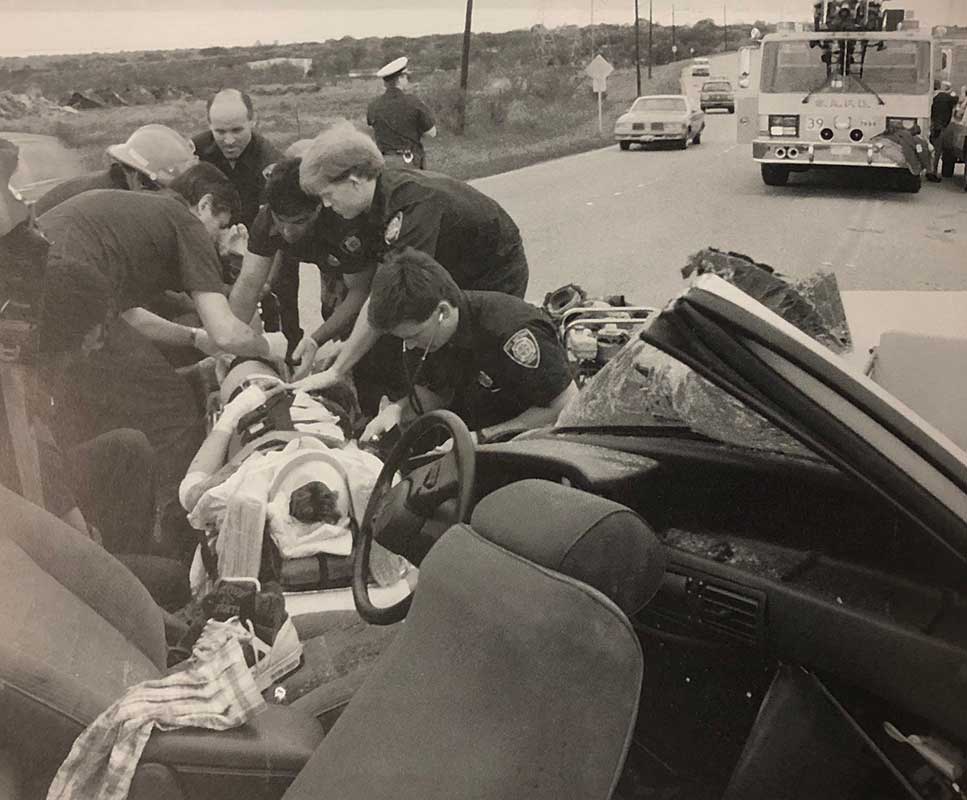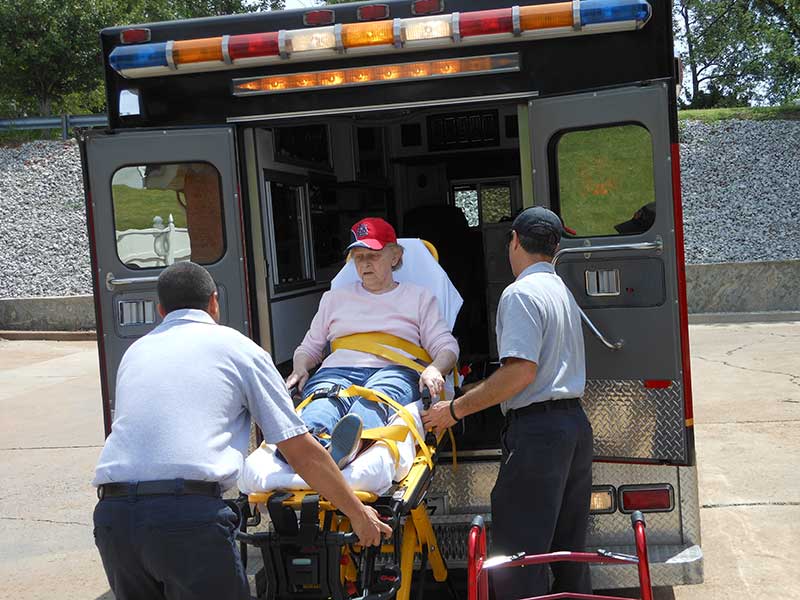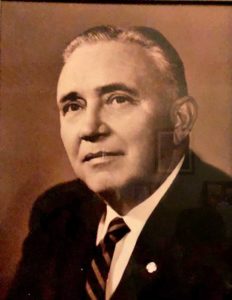Whether they’re EMTs who arrive at emergency scenes before ambulances or dual-trained fire fighter/paramedics who provide advanced life-saving skills, nearly all professional fire fighters in the United States play a critical role in the delivery of emergency medical services, with virtually all communities having some form of emergency medical service (EMS) system.
The widespread integration of fire and EMS services began in the middle and late 1970s, but not without great debate. At the time, EMS was not considered a public safety mission – it was a medical mission. Fire fighters were not hired to do that work and weren’t interested in emergency medical response – they had enough to do already fighting fires.
But over time, fire fighters embraced the changing nature of the job. At the same time, fire-based EMS was being recognized as a critical resource for cost-effective pre-hospital care. The value in using fire fighters for both fire and emergency medical response is now an accepted model for generating revenue for fire departments and an opportunity for fire fighters to learn new skills. Most importantly, fire-based EMS systems deliver time-critical response and effective patient care.
Today, fire-based EMS is an essential function in the fire service, with nearly 90 percent of professional fire departments performing some level of emergency medical services, making career fire fighters the largest group of providers of pre-hospital emergency care in the United States. No other organization – public or private – can provide pre-hospital emergency response as efficiently and effectively as fire departments. Fire fighters unquestionably improve patient care under the fire-based EMS model.
Cross-trained, dual-role fire fighters are trained in fire suppression and emergency medical response. Many of the original pre-hospital EMS providers in the United States were fire fighters with special additional training for providing medical services during emergencies that occurred outside the hospital. Today, essentially every fire fighter receives emergency medical training either in recruit school or on the job. Fire fighters also receive extra pay for doing emergency medical response. These extra incentives take several forms. Some are a percentage differential above a fire fighter’s base salary. Other forms include monthly stipends, one-time certification pay or a flat monthly or annual amount.
In the United States, fire-based EMS continues to experience significant changes that have effectively broadened the work of fire fighter/paramedics to meet needs that previously were only provided by hospitals. In addition, fire departments continuously evaluate current systems and propose changes to help them stay economically viable and to protect the quality and value of publicly funded fire-based EMS systems.
New challenges include opportunities to more fully integrate EMS response with the nation’s healthcare system to reduce costs for patients and healthcare providers and increase revenue for local governments. The reliability, mobility and accessibility of fire-based EMS puts fire departments in a unique position to enhance public safety and support the healthcare needs of the communities they serve.
A new model in fire-based EMS is emerging called Fire-based Community Healthcare Providers (or Community Paramedics). The idea is to train licensed and certified paramedics or EMTs to provide broader public health services outside of the emergency department or hospital.
Universal precautions are an industry standard for infection control. All human blood and certain human body fluids are all treated as if known to be infectious for human immunodeficiency virus (HIV), hepatitis B virus (HBV) and other blood-borne pathogens. In many collective bargaining agreements in the Unites States, there are clauses addressing inoculations, tests and screening, as well as appropriate personal protective equipment (PPE).
EMS is not a service that begins with the transport of a victim to an emergency care facility. It begins with a 9-1-1 call and the dispatch of highly skilled and trained emergency medical personnel from local fire departments who provide basic and advanced levels of care. As local governments and decision makers consider strategic plans for an all-hazards emergency response system, EMS should be included in those considerations as the most ideal pre-hospital 9-1-1 emergency response agency.
The reality today is that the fire service in the United States has become the first-line medical responder for critical illness and injury in virtually every community. Regardless of whatever agency provides medical transportation services, the fire service is the agency that first delivers on-scene healthcare services under most true emergency conditions. Therefore, prehospital 9-1-1 emergency response, in support of community health, security and prosperity, is not only a key function of each community, it has become, almost universally, a principal duty of the fire service as well.
There is still great debate in Canada about the role of fire fighters in EMS, fuelled by misleading information by rival service providers that fear fire fighters will take away paramedic jobs rather than see it as an opportunity to work side-by-side in a system that puts patients first. The vast majority of fire fighters in Canada are trained with medical skills.
TIMELINE
1940 – Columbus, Ohio, is the first fire department in the United States to have all its members trained in first aid. Fire fighters were required to have at least 30 hours in first aid work, serve as instructors of first aid and take water life-saving courses.
1960s – the experiences of treating wounded soldiers in Korea and Vietnam led researchers to study trauma survival rates, based on emergency care. To their surprise, they found that soldiers who were seriously wounded in Vietnam had a better survival rate than people who were injured in vehicle accidents on U.S. freeways and highways.
The report validated that ambulance services were diverse in nature and most ambulances used were unsuitable, had incomplete equipment, inadequate supplies and were staffed by untrained attendants. Recommendations for the prevention and management of accidental injuries included the standardization of emergency training for “rescue squad personnel, policemen, firemen and ambulance attendants.”
1966 – Important legislation was at the center of the emerging Emergency Medical Service (EMS) – the National Highway Safety Act of 1966 was created to improve traffic safety and to regulate EMS. This Act led to first nationally recognized curriculum for EMS – Emergency Medical Technician-Ambulance (EMT-A), which was published in 1969.
1972 – Advanced-level care – at least as it was perceived by the public – was influenced by the iconic television show, Emergency! which showed paramedics providing care in an advanced manner never seen before.

